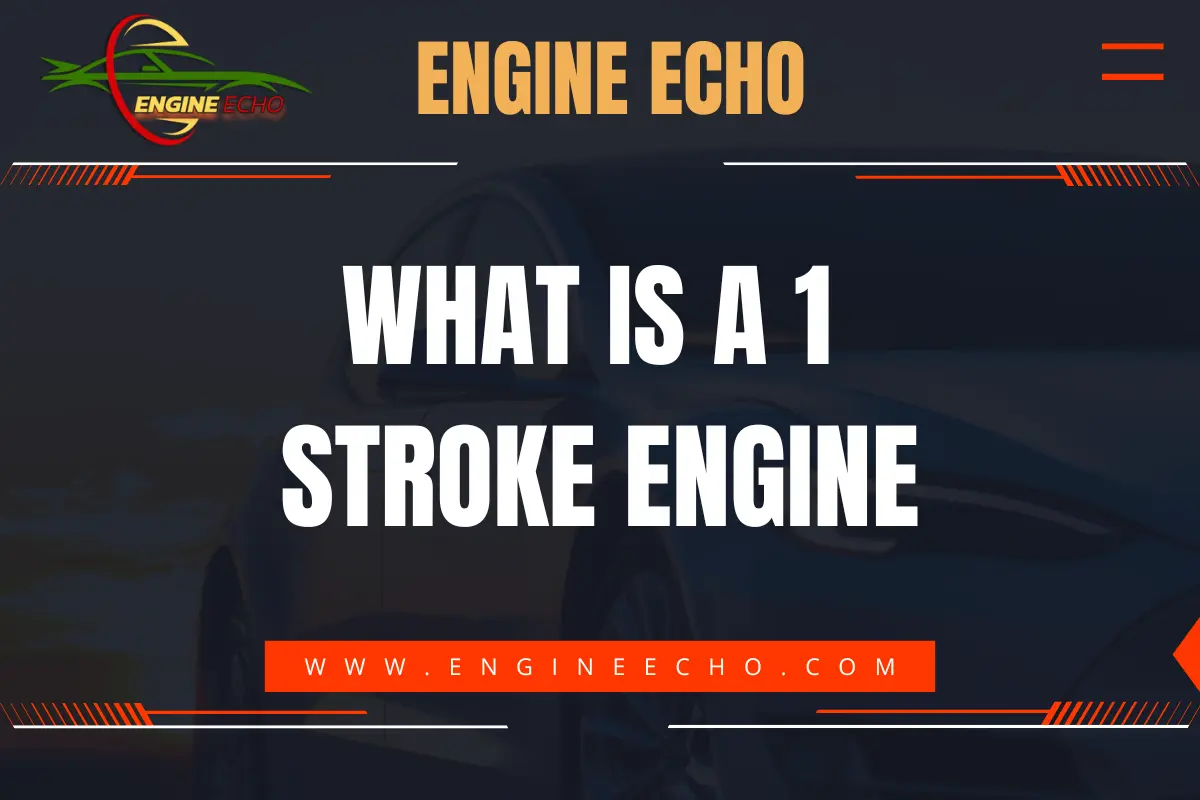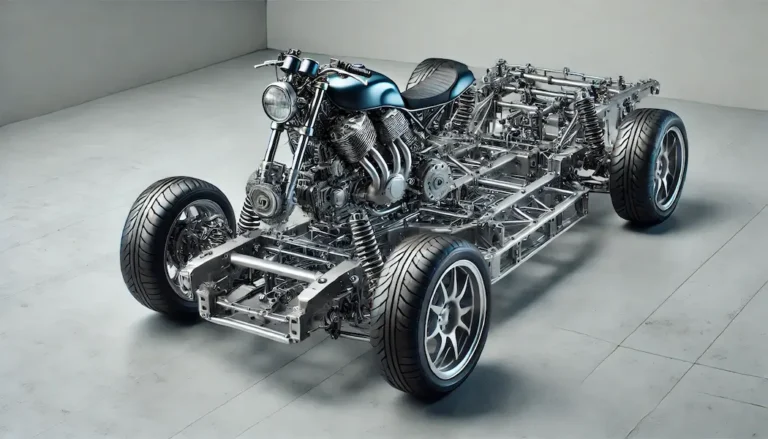What is a 1 Stroke Engine?

Key Takeaways:
- A 1-stroke engine is a theoretical design where the entire combustion process happens in a single stroke.
- While it’s an interesting concept, it differs greatly from 2-stroke and 4-stroke engines, and the practical use of a 1-stroke engine remains mostly in theory.
- The design, while simple in concept, faces major hurdles with mechanical stress and emissions.
- Understanding different engine types helps in making informed decisions about what might work for specific industrial and theoretical applications.
Introduction:
Internal combustion engines are behind much of the machinery we use every day, converting fuel into power to get things moving. Most of these engines operate on either a 2-stroke or 4-stroke cycle. But what if we could simplify the process even further? The idea of squeezing the entire engine cycle into just one stroke is pretty intriguing, but is it really practical? Having worked with different types of engines myself, I’ve seen how much design affects performance, so let’s dive into what the 1-stroke engine is all about and whether it’s worth paying attention to.
Overview of Internal Combustion Engines
Basic Function of Combustion Engines
At the heart of any internal combustion engine is the process of turning fuel into mechanical energy through combustion. The fuel-air mixture gets ignited, the explosion moves the pistons, and the engine produces power. The number of strokes an engine goes through refers to how many stages are involved in this process, and most engines use two or four strokes.
Common Engine Strokes
Engines typically come in two categories: 2-stroke and 4-stroke engines.
- 2-Stroke Engines: These engines complete their cycle in two strokes, which makes them lighter and simpler to build, but they tend to be less efficient and create more pollution. I’ve used these in small machinery where quick power is needed, but you wouldn’t want to rely on them for something long-term.
- 4-Stroke Engines: These are the standard in most vehicles today because they separate intake, compression, power, and exhaust into different strokes, making them more fuel-efficient and environmentally friendly. In my experience, these engines strike the best balance between power and efficiency for everyday needs.
So where does a 1-stroke engine fit in?
What is a 1-Stroke Engine?
Definition and Mechanism
A 1-stroke engine is a concept where the entire combustion cycle happens in one stroke. That means intake, compression, power generation, and exhaust all occur at once. It sounds great in theory—who wouldn’t want to simplify things? But in practice, this presents a bunch of challenges, as we’ll see in a bit. Personally, I think it’s an exciting idea, but it might be a bit too ambitious for what most engines need to do.
Historical Background
Over the years, most advancements have been focused on improving 2-stroke and 4-stroke engines because they offer the best trade-offs between power, efficiency, and environmental concerns. The 1-stroke engine has been talked about mostly in theory or experimental settings, but I’ve yet to see it make any real waves in industry.
Working Principle of a 1-Stroke Engine
Single Stroke Cycle
The 1-stroke engine compresses everything into a single motion:
- As the piston moves down, it pulls in the fuel-air mixture, compresses it, ignites it, and expels the exhaust—everything at once.
- This sounds efficient at first glance, but it’s like trying to juggle three balls while riding a bike. You’re doing everything simultaneously, which quickly leads to complications.
Fuel-Air Mixture and Exhaust
Handling all these processes at once—intake, combustion, and exhaust—puts a huge strain on the engine. Modern engines separate these functions for a reason, mainly to avoid overheating and incomplete combustion. In a 1-stroke engine, I imagine managing those simultaneous processes would be like trying to put out a fire while starting a new one. It just doesn’t leave much room for efficiency or durability.
Comparison with Other Engines
1-Stroke vs. 2-Stroke Engines
- Efficiency: A 1-stroke engine might seem simpler on paper, but based on what I’ve seen, the efficiency of burning fuel in just one stroke would probably be worse than in a 2-stroke engine. A 2-stroke engine already faces challenges with fuel consumption, and cramming everything into one stroke wouldn’t help.
- Mechanical Complexity: In a 1-stroke engine, the mechanical parts would need to handle the entire process in one go. From what I’ve seen in 2-stroke engines, that’s already tough enough. Trying to do it all at once would lead to quicker wear and tear, and I don’t think anyone enjoys replacing parts constantly.
1-Stroke vs. 4-Stroke Engines
- Power: 4-stroke engines are the standard for a reason—they separate their tasks, allowing for more control and better performance. In a 1-stroke engine, the lack of separation would likely lead to less power output. I’ve always preferred the controlled efficiency of a 4-stroke for that reason.
- Fuel Efficiency: When it comes to fuel efficiency, 4-stroke engines are hard to beat. From my experience, they’re much better at cleanly burning fuel compared to their simpler counterparts. A 1-stroke engine would probably guzzle fuel without much to show for it.
Advantages of 1-Stroke Engines
Simplicity and Design
The one thing the 1-stroke engine has going for it is its simplicity. Fewer moving parts mean easier manufacturing and less maintenance. I can see why that would appeal to anyone looking for a bare-bones, no-fuss engine. If you’re building something where simplicity is key and performance isn’t the top priority, this might be worth looking into.
Power Output and Efficiency
While the power generation isn’t exactly efficient, in low-demand applications, the quick power burst could be useful. I’d imagine it working well in some small-scale machines where rapid energy is needed, but nothing too serious.
Disadvantages of 1-Stroke Engines
Mechanical Limitations
One of the big downsides is that the engine parts have to handle everything at once, which leads to a lot of wear and tear. From what I’ve seen, even in engines that space out their tasks, parts wear out fast enough. Putting them under the constant strain of a 1-stroke engine? That’s a recipe for a short-lived machine.
Emissions and Environmental Impact
Since there’s no dedicated exhaust stroke, the 1-stroke engine would probably have much higher emissions compared to 2- and 4-stroke engines. If you’re thinking about environmental impact, this engine likely won’t be your friend. It’d be tough to meet modern emissions standards with such an inefficient design.
Applications of 1-Stroke Engines
Industrial Machinery
While I haven’t seen any large-scale industrial applications of the 1-stroke engine, I can see where its simplicity might come in handy. In low-power machinery, where you don’t need to worry about emissions or efficiency, the reduced maintenance could be a benefit.
Automotive Applications
The automotive industry hasn’t adopted 1-stroke engines for a reason. Managing fuel efficiency, emissions, and durability in cars is already a challenge. A 1-stroke engine just wouldn’t meet the demands of modern vehicles, and I can’t see it being a practical option for anything beyond experimental projects.
Specialized Use Cases
The simplicity of the design means it might find use in very specific, low-demand machines. Maybe if you’re tinkering with a small, specialized machine where frequent part replacement is fine, it could be worth experimenting with. But for most mainstream uses, it’s just not practical.
Case Study: The Evolution of Engine Technology
From 2-Stroke and 4-Stroke to Innovative Alternatives
Engine technology has come a long way, focusing mostly on improving 2-stroke and 4-stroke designs. They offer a nice balance between power, efficiency, and emissions. Based on what I’ve seen, innovation happens when we tweak what already works, which is why the 1-stroke concept hasn’t moved beyond theory.
The Future of 1-Stroke Engines
The 1-stroke engine remains an idea rather than a practical tool, but who knows? With advancements in materials and engineering, there might be a place for it in niche applications. However, for now, I’d recommend sticking to engines that have proven their worth—especially if you’re looking for something reliable.
Conclusion
The 1-stroke engine is an interesting concept, but for now, it seems more like a thought experiment than something you’d want to build your next project around. Sure, its simplicity is appealing, but the challenges it faces with mechanical stress, emissions, and efficiency make it impractical for most applications. If you’re in the market for an engine design that’s reliable and efficient, I’d stick to the 2- or 4-stroke engines—they’ve earned their place in modern machinery for good reason.
FAQs
Q: What is the main difference between a 1-stroke and 2-stroke engine?
A: The main difference lies in how the engine completes its combustion cycle. In a 1-stroke engine, the entire process—intake, compression, combustion, and exhaust—happens in a single stroke. In contrast, a 2-stroke engine divides these processes across two strokes, making it more efficient and practical in real-world applications.
Q: Why aren’t 1-stroke engines used in modern vehicles?
A: 1-stroke engines face several practical challenges, such as high emissions, low fuel efficiency, and mechanical wear due to handling all engine processes in one motion. These issues make them unsuitable for modern vehicles, which require more reliable and environmentally friendly solutions like 2-stroke and 4-stroke engines.
Q: Are 1-stroke engines more efficient than 4-stroke engines?
A: No, 4-stroke engines are generally more efficient because they separate the combustion process into distinct stages, leading to better fuel economy and cleaner emissions. 1-stroke engines, on the other hand, attempt to do everything at once, which results in incomplete combustion and higher fuel consumption.
Q: Where could 1-stroke engines potentially be used?
A: While not common in mainstream applications, 1-stroke engines might be useful in very low-power, specialized machines where simplicity is more important than efficiency or emissions control. However, these use cases are rare, and 1-stroke engines are not widely adopted.
Thanks for checking out this article on EngineEcho.com! Hope you found this article: "What is a 1 Stroke Engine?" helpful! If you liked it and want to dive into more car engine topics, head over to our homepage. There's always something new to discover in the world of engines. Enjoy your reading journey!
Check out our previous article: Engine Lifters: Function and Maintenance






